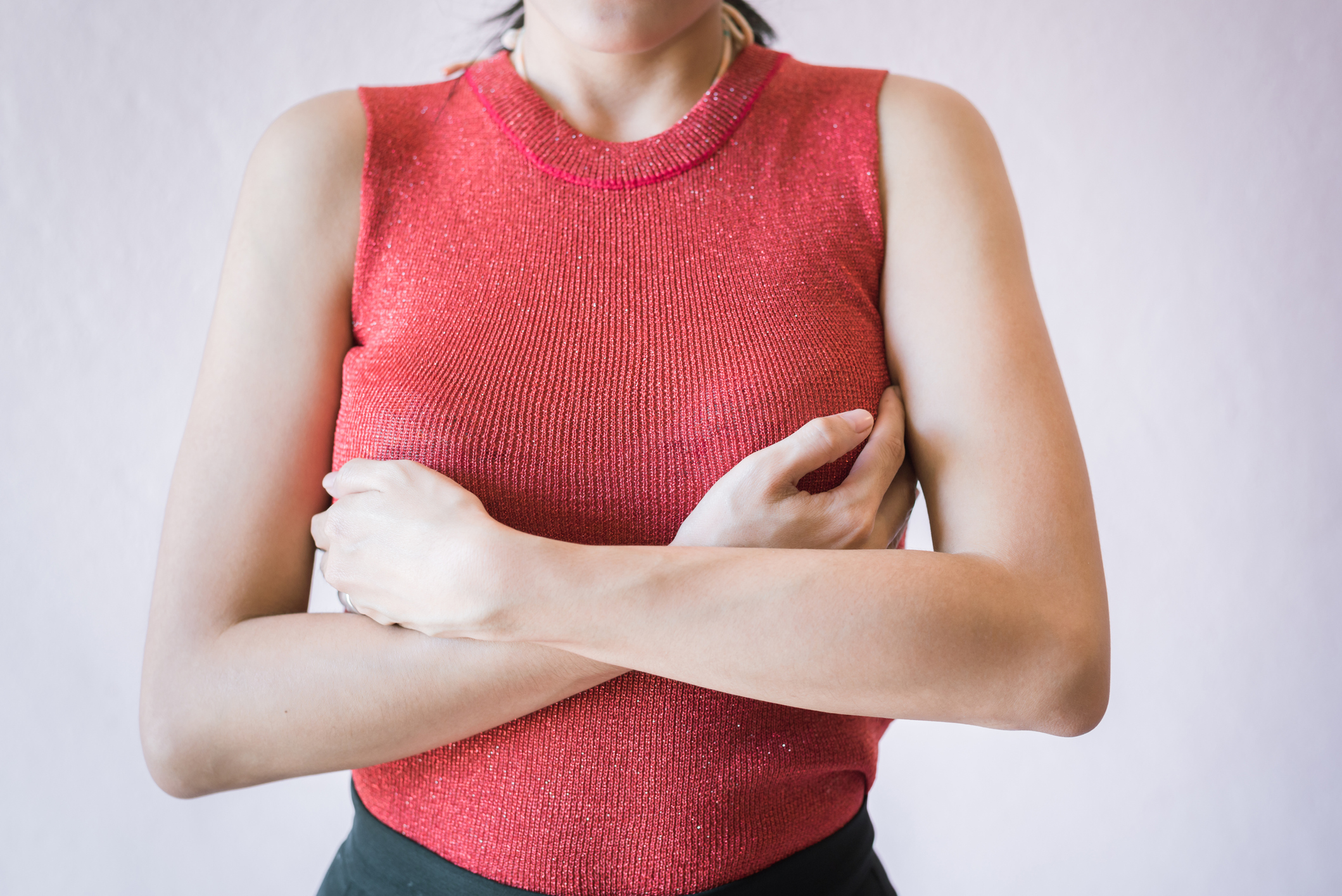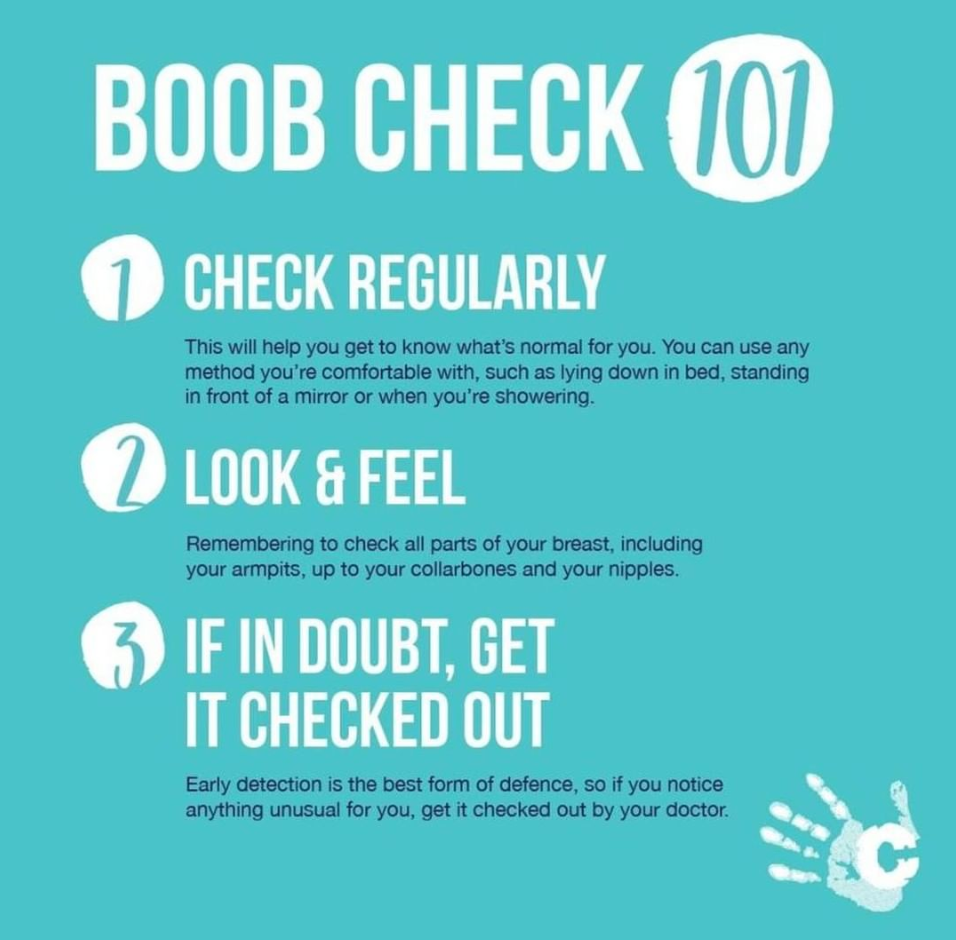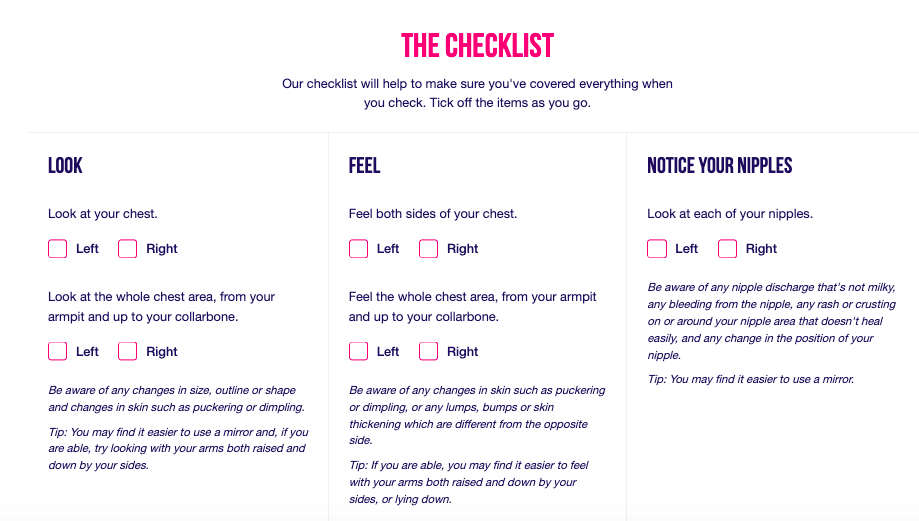How to check your breasts for lumps, plus why it's not just lumps you need to be checking for
This Breast Cancer Awareness month, if you do nothing else: arm yourself with a step-by-step guide to checking your boobs.

This Breast Cancer Awareness month, if you do nothing else: arm yourself with a step-by-step guide to checking your boobs.
If you've ever Googled how to check your breasts for lumps, you're likely not all too clear on how to identify a cancerous breast lump.
Enter stage right, your complete guide: because too many people are still dying from breast cancer when it could be prevented. Each year in the UK, around 55,000 women and around 400 men will be diagnosed with breast cancer. "It can affect any body, at any age," shares Sophie Dopierala-Bull, CoppaFeel! education and health comms director. "We all have breast tissue, so it’s important we are all clued up on how to be breast aware."
Not sure what being breast aware means? In short, it's checking your breasts regularly and booking a doctor's appointment if you notice any abnormalities - read our complete guide to the main breast cancer symptoms to be aware of, here.
Save you feeling overwhelmed, we've asked the experts at CoppaFeel to break it down for you into three simple steps. "Remember, you can use whatever method you are comfortable with and do it wherever you're most comfortable - it’s all about making it part of your routine," encourages Dopierala-Bull.
Don't miss our expert-led guides to gynaecological cancer, and the various skin cancer symptoms, while you're here.

How to check your breasts for lumps
Your step-by-step guide
1. Look
First up, rather than having a good old feel of your boobs and chest, have a look at yourself in the mirror. Answer the following questions:
Marie Claire Newsletter
Celebrity news, beauty, fashion advice, and fascinating features, delivered straight to your inbox!
- Are your nipples looking the same as usual, or can you see puckering, dimpling or thickening?
- Do either of your breasts look like they've changed in size, outline or shape?
Top tip: a mirror can help here. Why not try a handheld one - much easier to check out your under-boob and side angles, too.
2. Feel
Next up, have a feel of both sides of your boobs. This includes everything from the area around your armpit to your collarbone.
- Can you feel any hard, angular lumps, or lumps of any kind?
- Can you notice any skin changes, as above?
3. Notice your nipples
Finally, and as per the first point, have a long look at your nipples.
- Can you see any nipple discharge?
- Are either of your nipples bleeding?
- Do you have any rashes around your nipples?
- Do you have any crusting on or around your nipple area?
If yes to any of the above, do book an appointment with your GP. Better to be safe than sorry.

Help! I feel apprehensive checking for lumps
Know this - you are not alone in this feeling, but checking your breasts and being mindful of other breast cancer symptoms is vital for catching your cancer early, should you develop it.
“I always tell patients when they say that they don't know how to examine themselves that there is no mystery to self breast checking," shares Catherine Alam, Advanced Nurse Practitioner and CoppaFeel! Medical Advisory Group member.
"Just feel the breast tissue, including the nipple area and up to the collar bones, and don't forget your armpits. It’s as simple as getting to know what is normal for you so that you notice when something changes.”
The following guidance may help reassure you.
1. The more you check, the more you'll know
As with anything in life, the more you do something, the more familiar it will become and the more comfortable you'll feel doing it. The same applies with checking your breasts and being mindful the less common breast cancer symptoms: get into a regular routine, and the rest will follow.
"Everyone’s boobs are different, so it's important to start a relationship with your pair," shares Dopierala-Bull. "Then you’ll feel confident to notice when something isn’t quite right for you."
Bottom line: make it part of your regular self care routine. When diagnosed early, 98% of breast cancer sufferers will survive, compared with around one in four - that's 26% - of those who don't get a diagnosis until the last minute.
2. Be aware of all the symptoms
FYI, a lump isn’t the only sign and symptom of breast cancer.
"Many symptoms you might only notice by actually looking at your chest," shares Dopierala-Bull.
And on the lump front - many breast lumps are actually perfectly normal, so make sure you know what types of lumps to look for (as per the Avera website, you're looking for a rigid lump firm, angular edges - a soft or round lump is less likely to be cancerous. They should feel more like rocks than grapes).
Final thing - you boobs aren't just the two round lumps on your chest. "Your breast tissue extends up to your collarbone and under your armpit, so check the whole area," she advises. "Be aware of any changes in size, outline or shape and changes in skin such as puckering, dimpling, thickening or changes to your nipple, too."
3. If in doubt, get checked out
Think you've spotted something out of the ordinary? "Monitor it for a week and contact your doctor if it persists, advises Dopierala-Bull.. "Early detection is the key to ensuring your breast cancer is treatable."
Final thing? Don't be shy about being breast aware - it really is essential for making sure you look after yourself. "I urge people now more than ever to be breast aware; to know what’s normal for them, report anything different and attend the NHS Breast Screening Programme when invited," shares doctor Victoria Harmer, a breast cancer consultant nurse. "You are the expert of your own body - if anything feels wrong or unusual, please do report this to your GP."
How to check your breasts for lumps? Sorted. Now spread the word.

Ally Head is Marie Claire UK's Senior Health and Sustainability Editor, nine-time marathoner, and Boston Qualifying runner. Day-to-day, she heads up all strategy for her pillars, working across commissioning, features, and e-commerce, reporting on the latest health updates, writing the must-read wellness content, and rounding up the genuinely sustainable and squat-proof gym leggings worth *adding to basket*. She also spearheads the brand's annual Women in Sport covers, interviewing and shooting the likes of Mary Earps, Millie Bright, Daryll Neita, and Lavaia Nielsen. She's won a BSME for her sustainability work, regularly hosts panels and presents for events like the Sustainability Awards, and is a stickler for a strong stat, too, seeing over nine million total impressions on the January 2023 Wellness Issue she oversaw. Follow Ally on Instagram for more or get in touch.